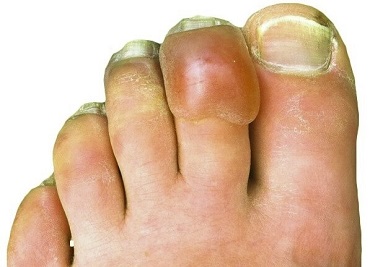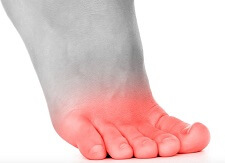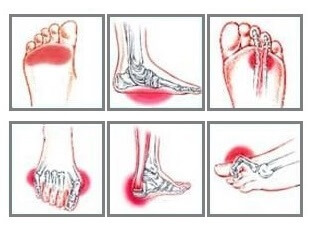- Home
- Common Foot Problems
- Blisters
Blisters On Feet
Written By: Chloe Wilson BSc(Hons) Physiotherapy
Reviewed By: FPE Medical Review Board
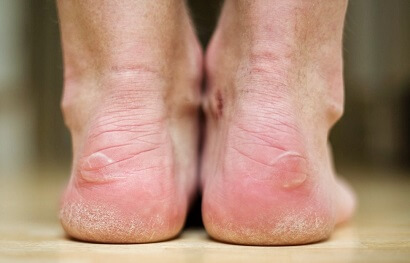
Blisters on feet and toes are a common problem and cause of foot pain. A foot blister is a small, fluid filled bubble-like pocket that develops on the upper layers of skin.
In most cases, foot blisters are caused by friction, but they can also occur due to things such as infection, burns and chemical exposure. They usually contain clear fluid known as plasma, but can sometime contain blood or pus.
Foot blisters can vary in size and depth depending on the cause. They may be associated with a foot rashes or lumps on the feet.
Here, we will look at how blisters on feet develop, the different types of blisters and common causes of each and then we'll look at the best treatment options and prevention strategies for blisters on toes and feet.
How Do Foot Blisters Develop?
Blisters on feet develop when the skin on part of the foot is damaged, most commonly from friction. In an attempt to protect itself from further damage, fluid collects under the injured skin to provide cushioning and allow healing. This fluid forms a small pocket, known as a blister.
Blisters can occur anywhere on the body, but hand and foot blisters are the most common. Blisters are one of the most common types of foot rash.
Types of Foot Blister
Blisters on feet typically fall into one of three groups based on how they appear:
- Clear Blisters: In most cases, blisters on feet are filled with clear fluid, known as serum aka plasma. Serum is one of the components found in blood, alongside red blood cells and clotting factor. It is made up of proteins, antibodies, hormones, antigens and electrolytes.
- Blood Blisters: Sometimes, foot blisters may appear red or black which indicates that they contain blood. This happens when some of the small blood vessels are damaged as well as the skin.
- Infected Blisters: If blisters on feet become infected, pus forms and collects giving them a whitish or yellow tinge.
What Causes Blisters On Feet?
There are a number of possible causes for blisters on feet, the most common being:
1. Friction Blisters
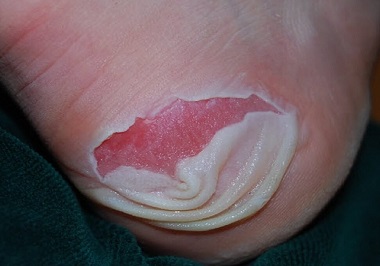
The most common cause of blisters on toes and feet is friction. Friction blisters tend to develop when walking or running long distances or when wearing new or poor-fitting shoes (too tight or too loose) which rubs on the skin, causing fluid to accumulate under the top layer of skin.
Blisters on toes are more common when the skin is moist and warm rather than when it is dry or soaked.
This is one of the reasons people are often caught out – they may not be walking/running any further than normal but if they are going faster, the weather is warmer or wetter or their footwear is warmer material, their feet may perspire more. This in turn increases the likelihood of developing blisters on feet.
There is often a misconception that blisters on toes develop from repetitive friction, however, it actually tends to be sudden, brief, intense friction or rubbing on the skin that causes blisters on feet. Prolonged, repetitive, less intense friction on the skin is more likely to result in foot corns or calluses than foot blisters.
2. Foot Blisters From Excessive Cold
Tissue damage from frostbite can also cause blisters on feet.
When we are exposed to temperatures below freezing, blood vessels contract pushing blood away from our extremities, particularly the hands and feet in an attempt to keep us warm. This can lead to skin tissue damage, blistering and even death.
Frostbite can be categorized in four stages, depending on severity, and blisters on toes are usually associated with second-degree frost bite.
3. Foot Blisters From Excessive Heat
Foot blisters can also develop in response to intense heat due to:
- Burns: First degree burns will often blister after a couple of days as they are healing. Second-degree burns usually blister immediately
- Sunburn: Excessive exposure to UV light leads to sunburn which can result in painful blistering of the skin
4. Blisters From Medical Conditions
There are also a number of medical conditions which can cause blistering of the skin such as chicken pox, shingles, herpes, impetigo, cold sores, scabies and some forms of eczema.
5. Chemical Blistering
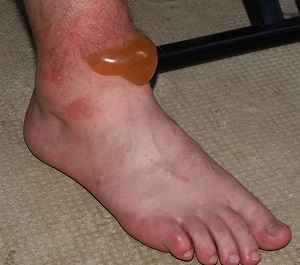
Skin may also develop blistering when in contact with certain chemicals, solvents, detergents or cosmetics.
Chemical foot blisters will vary in size and severity depending on the severity of the allergic reaction.
It is always advisable to wear gloves and other protective clothing when using any chemicals to prevent skin irritation and blistering.
Other Possible Causes
There are a few other things that can cause rashes to develop on the feet that look similar to foot blisters:
- Contact Dermatitis: small bumps or spots develop in response to an irritant or allergy
- Eczema: dry, red patches of skin that are often itchy and may progress to small fluid-filled blister-like spots
- Hand, Foot & Mouth Disease: a common viral infection in children that causes small red foot blisters, typically on the soles of the feet
- Foot Lumps: There are other things that can cause lumps to develop on the feet such as cysts and fibromas
- Plantar Warts: small, rough lumps often containing small black dots, caused by an infection
You can find out more about these and other similar conditions in the foot rash section, including how to treat them and how to tell if it's something serious.
Treatment For Blisters On Feet
There are lots of different treatment options for blisters on feet and most blisters on toes and feet will heal naturally, without requiring medical care. When possible, you want to avoid breaking foot blisters to reduce the risk of infection. Always wash your hands or wear gloves before touching a blister to reduce the risk of infection.
1. Treating Unburst Blisters
If possible, avoid bursting foot blisters. Leaving the skin intact provides a natural barrier, reducing the risk of infection. As the foot blister heals, the skin will naturally harden and fall off. Ideally, leave blisters on feet uncovered and avoid wearing any shoes that rub.
If necessary, you can cover a foot blister with either a plaster or gauze pad depending on their size or try using a product such as a Compeed dressing pad to prevent further friction on the area.
2. Treating Burst Blisters
Most large blisters on toes will break on their own. Don’t be tempted to remove the broken skin.
Instead, allow the fluid to drain and then cover the area with a sterile dressing which should be changed daily until the foot blister has fully healed.
3. Draining Foot Blisters
If a large foot blister is causing considerable discomfort, you may need to drain it.
Wash your hands before you start and use a clean, sterile needle to make small puncture holes around the edge of the blister, rather than the centre.
Gently press over the area so the fluid drains out, then wash the area, pat dry and cover with clean gauze. Change the dressing daily.
4. Products That Can Help
There are a number of products that can help in treating foot blisters such as special dressings and gauze. One of the most popular is Compeed blister pads.
5. Footwear
If your blisters on feet are the result of wearing new shoes,
avoid wearing them again until the foot blister is fully healed. Then break
the shoes in by wearing them for short periods until they soften.
Foot Blister Summary
There are lots of possible causes for blisters on feet ranging from friction to infection, or chemicals to medical conditions.
Foot blisters may vary in colour and size but usually develop quickly. In most cases, it is best to leave blisters on feet well alone - don't be tempted to pop them! But there are various dressings and coverings that can help protect foot blisters.
Blisters on feet are just one problem that affects the feet and toes, there are many other causes of foot rashes and foot lumps. You can find out more about other common problems in the causes of foot pain section.
Alternatively, if you want help working out what is causing your pain, visit the foot pain diagnosis section.
You may also be interested in the following articles:
- Pain On Top Of Foot
- Foot Arch Pain
- Nerve Pain In The Foot
- Swollen Feet & Ankles
- Foot Numbness
- Lumps On Toes
Related Articles
Page Last Updated: 20th November, 2024
Next Review Due: 20th November, 2026
